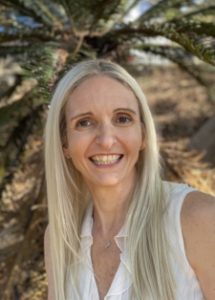Self-injury (also known as self-harming or self-mutilating) is a deliberate non suicidal behaviour.
The most common forms of Non-Suicidal Self-Injury (NSSI) are cutting, burning and scratching skin. NSSI is often described as a maladaptive or unhealthy attempt to regulate emotions.
How Common is Non-Suicidal Self Injury?
Because of the stigma and silence surrounding self-harm, it is difficult to know exactly the proportion of teenagers affected.
A school survey conducted in Queensland (1), found that of the 3757 Year 10 and 11 students sampled, 6.2% reported harming themselves in the previous 12 months. Of these, 59.2% were self-cutting, while 29.6% had overdosed on prescription drugs.
The Australian National Epidemiological Study of Self Harm (ANESSI) reports that the rate of self-injury peaks for females at 18-24 years, and for males at 10-17 years old.
Why do some people harm themselves?
Self-harm is often used as a way to cope with emotions and feelings. Individuals who self-harm, describe it as a way to:
- relieve pain;
- manage emotions;
- feel something other than emotional pain;
- feel that they are alive;
- self-punish.
Self-injury is a coping mechanism for these individuals when they are feeling overwhelmed with problems; confused or exhausted by all of their feelings; and because they don’t know how else to communicate or control their thoughts or feelings.
Common triggers for self-injury include:
- Thoughts about past abuse;
- Actual abuse;
- Stressful situations;
- Conflicts with family or friends;
- Issues at school;
- Depression;
- Bullying.
There are many consequences of self-harm, such as feeling embarrassed or ashamed, or having to try to explain things to family and friends.
People may stare at the injuries or ask questions, or judge and label the person. As a result, the self-harming individual may sometimes have to wear certain clothing to hide their injuries.
In addition, there is the risk of getting infections or scarring from the injuries, or being hospitalised.
Signs of Self-Harming Behaviour
Although the individual may try to hide their self-harming behaviour, there are still signs to watch for, including:
- unexplained, frequent and suspicious injuries;
- blood on clothing;
- wearing long sleeves and pants even when the weather is hot;
- refusing to go to the beach or swimming pool;
- razors, needles, scissors, pencils sharpeners … disappearing;
- first aid kit being used often or supply drying out quicker than usual.
Tips for Parents
Discovering that your teenager is self-harming may well be distressing, upsetting, stressful. I often recommend to parents to try to keep their calm, and to show/tell your child that you are there for them. It is important to:
- show empathy;
- listen;
- care; and
- put a safety plan in place with the child’s therapist.
There is also a list of what NOT to do:
- Patronise;
- Infantilise;
- Make fun;
- Avoid the subject, and ignore it;
- Judge;
- Assume and jump to conclusions;
- Label;
- Panic.
As explained in an article on the Parentline website, when families finally know about their child secret, reactions can often be similar to the ones experienced in grief and loss. Parents may experience disbelief, denial and anger, as well as fear and anxiety, feelings of helplessness and guilt.
Treatment for Self-Harm
Treatment goals as explained in the Royal Australian and New Zealand College of Psychiatrists (6) can be to:
- Treat associated mental illnesses;
- Prevent future self-harm;
- Improve coping skills;
- Reduce distress;
- Prevent suicide;
- Extend the time between self-harm;
- Reduce injury severity;
- Help families.
Commonly used therapies include Cognitive Behavioural Therapy (CBT), which looks at challenging, stopping, and changing thoughts and feelings; Problem Solving Therapy (PST); and Interpersonal Therapy (IPT). Anti-depressant medications may also be prescribed by a doctor.
Safety Concerns
Even without suicidal intent, teenagers who self-harm can go too deep while cutting, or take too much pills and kill themselves accidentally.
In case of immediate danger dial 000 now.
Other sources of support and prevention:
- Lifeline 13 11 14
- Kids Helpline 1800 55 1800
- Parentline 1300 30 1300
- Suicide Call Back Service 1300 65 94 67
If you are looking for a psychologist to help with self-harming issues, I have completed the APS suicide prevention training as well as professional development on NSSI in adolescents.
 Author: Meggy Delaunay, PG Dip Psych Practice, PG Dip Dev Psych, M Genetic Psych, B Psych, MAPS.
Author: Meggy Delaunay, PG Dip Psych Practice, PG Dip Dev Psych, M Genetic Psych, B Psych, MAPS.
Meggy Delaunay is a psychologist who primarily works with children, adolescents and young adults. She is a registered Psychologist in Australia, New Zealand and France, and can provide therapy sessions in English and French.
To make an appointment try Online Booking. Alternatively, you can call Vision Psychology Brisbane on (07) 3088 5422.
